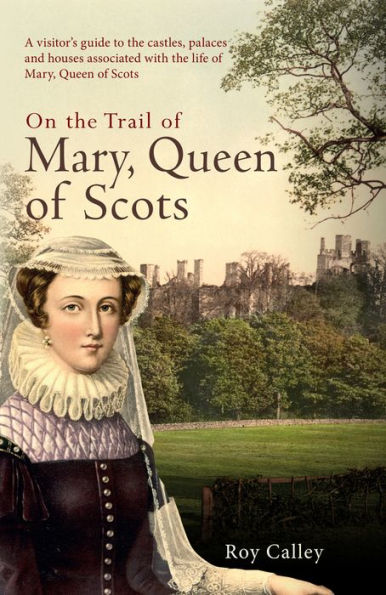 Few historical figures have been both so romanticised and so ridiculed as Mary, Queen of Scots, in her lifetime and since. Was she the hapless, love-struck girl who was led astray by passion? Or the Catholic outsider, refusing to adapt to Protestant Scotland’s ways? Or the incompetent stateswoman, abysmally inept when compared to her contemporaries, Elizabeth I and Catherine de Medici? Historians differ vastly in their interpretations but one thing is for certain: Mary holds a sway over the imagination that has rarely been equalled. Roy Calley is unashamedly pro-Marian in his approach to the subject of his new book, ‘On the Trail of Mary, Queen of Scots’, the latest in the welcome trend for historical tour guides: not only rich gifts for would-be novelists, excellent companions to, or replacements for, Rough Guides, but also delightful reads for history lovers.
Few historical figures have been both so romanticised and so ridiculed as Mary, Queen of Scots, in her lifetime and since. Was she the hapless, love-struck girl who was led astray by passion? Or the Catholic outsider, refusing to adapt to Protestant Scotland’s ways? Or the incompetent stateswoman, abysmally inept when compared to her contemporaries, Elizabeth I and Catherine de Medici? Historians differ vastly in their interpretations but one thing is for certain: Mary holds a sway over the imagination that has rarely been equalled. Roy Calley is unashamedly pro-Marian in his approach to the subject of his new book, ‘On the Trail of Mary, Queen of Scots’, the latest in the welcome trend for historical tour guides: not only rich gifts for would-be novelists, excellent companions to, or replacements for, Rough Guides, but also delightful reads for history lovers.
Calley’s research is impressive – he’s visited all the locations documented in the book, even those which no longer exist, such as Fotheringhay Castle and Kirk o’Field. The chamber where David Rizzio was murdered, the room where she gave birth to James VI, castle-prison after castle-prison: all are explored in enthusiastic, insightful detail. Sometimes the results are underwhelming in their lack of lingering Mary-related evidence: of Notre Dame, Calley observes, “her footprint was light and brief in the context of the building’s rich and varied history.” But this, too, reveals much about his subject: unlike her one-time gaoler, Bess of Hardwick, or her rival, Elizabeth I, Mary never commissioned any buildings or ordered much in the way of redecoration. Some might see this as testament to Mary’s flighty, unqueenly personality, but it also seems a poignant comment on her tragic life: she was never in one place, or queen regnant for long enough to actually undertake any such tasks. So whilst the lack of concrete details could be frustrating, here it adds to the pathos of Mary’s story.
Some of the best details in the book aren’t confined to Mary’s own story – for instance, in Roscoff, where Mary landed in France, aged five, Calley narrates a fascinating anecdote about how the men of this town were the original ‘Onion Johnnies’, they of the striped-T-shirt and beret caricatures, and observes that the Kouign Amann cake, whilst potentially “artery-hardening” is also delicious. He also sets Mary’s story in context, discussing how Scottish landmarks like Stirling Castle and Holyroodhouse Palace were affected before her time by the likes of Robert the Bruce, William Wallace and the five Jameses who preceded Mary, lending the book a rich depth that makes for intriguing reading.
However, there are elements of this book that won’t be to everyone’s taste: Calley’s pro-Marian sympathies sometimes lead to a lack of objectivity, such as when he excuses Mary’s marriage to Darnley on the grounds of “infatuation”, but then puzzles over her motives for marrying Bothwell since “Lustful passion simply does not seem to be part of Mary’s makeup”. Elsewhere, there is some rather wishful thinking regarding Mary’s scheme to marry the Duke of Norfolk, when he ascribes these naïve, romantic sentiments to his heroine: “Mary assumed this would be a way of pleasing Queen Elizabeth, in the hope that she would eventually be released from captivity because the marriage to Norfolk would strengthen her ties to England.” Even someone as politically incompetent as Mary would hardly have seen conspiring to marry one of the highest nobles in England as a delightful surprise for her cousin.
Cynics, too, might not appreciate some of Calley’s more superstitious comments: at Bolton Castle, he says “I genuinely felt the presence of Mary when I was sat on one of the stone benches looking out on the countryside.” However, generously, he adds, “but I will understand if you’re one of those who want to quickly move on to the next chapter!” As an inveterate sceptic, I did – but these moments certainly didn’t detract from what was, ultimately, a riveting, fascinating and highly entertaining read.

















Very interesting. Thank you.
Thank you for your review. I appreciate the words and I hope I’ve added even a small amount to Mary’s (Marie’s) story. Once again many thanks for reading it and such a pleasant review
Thank you!